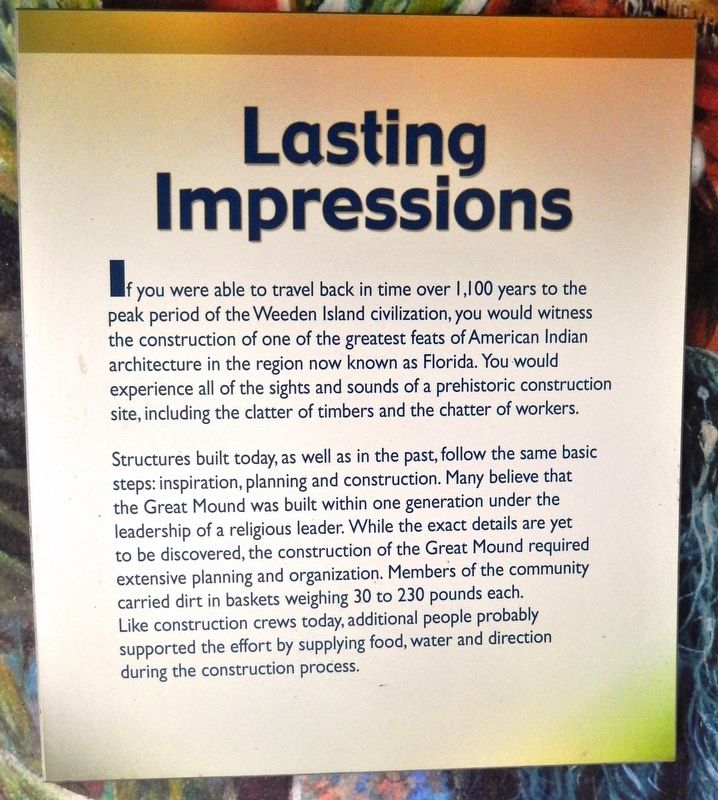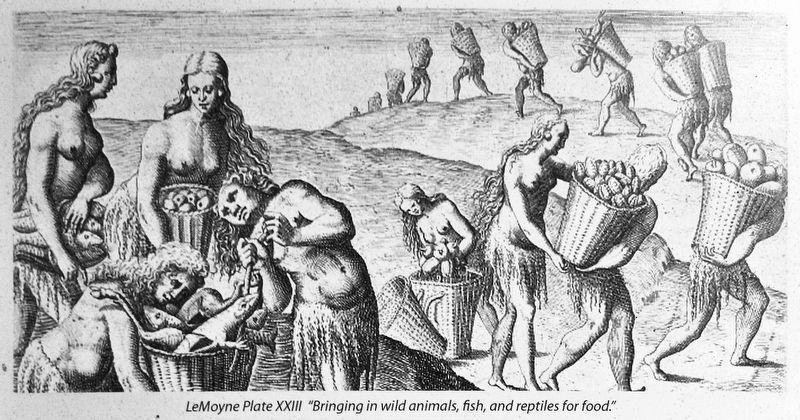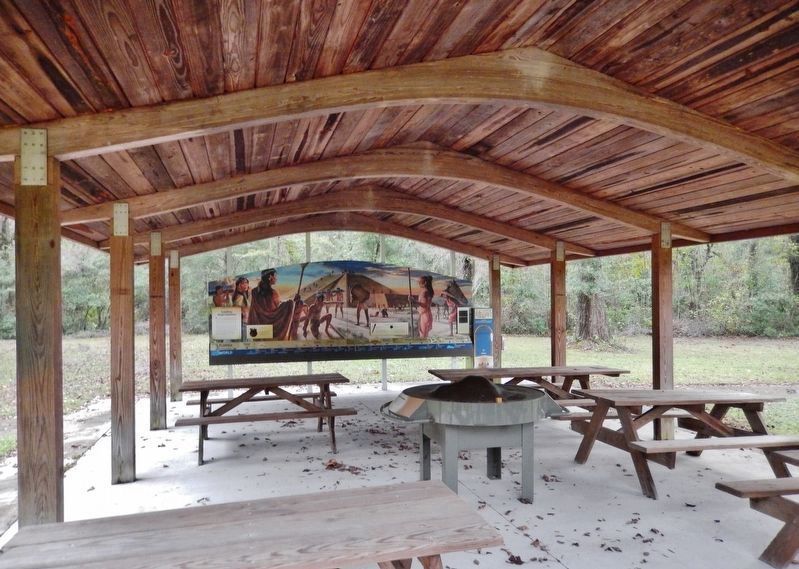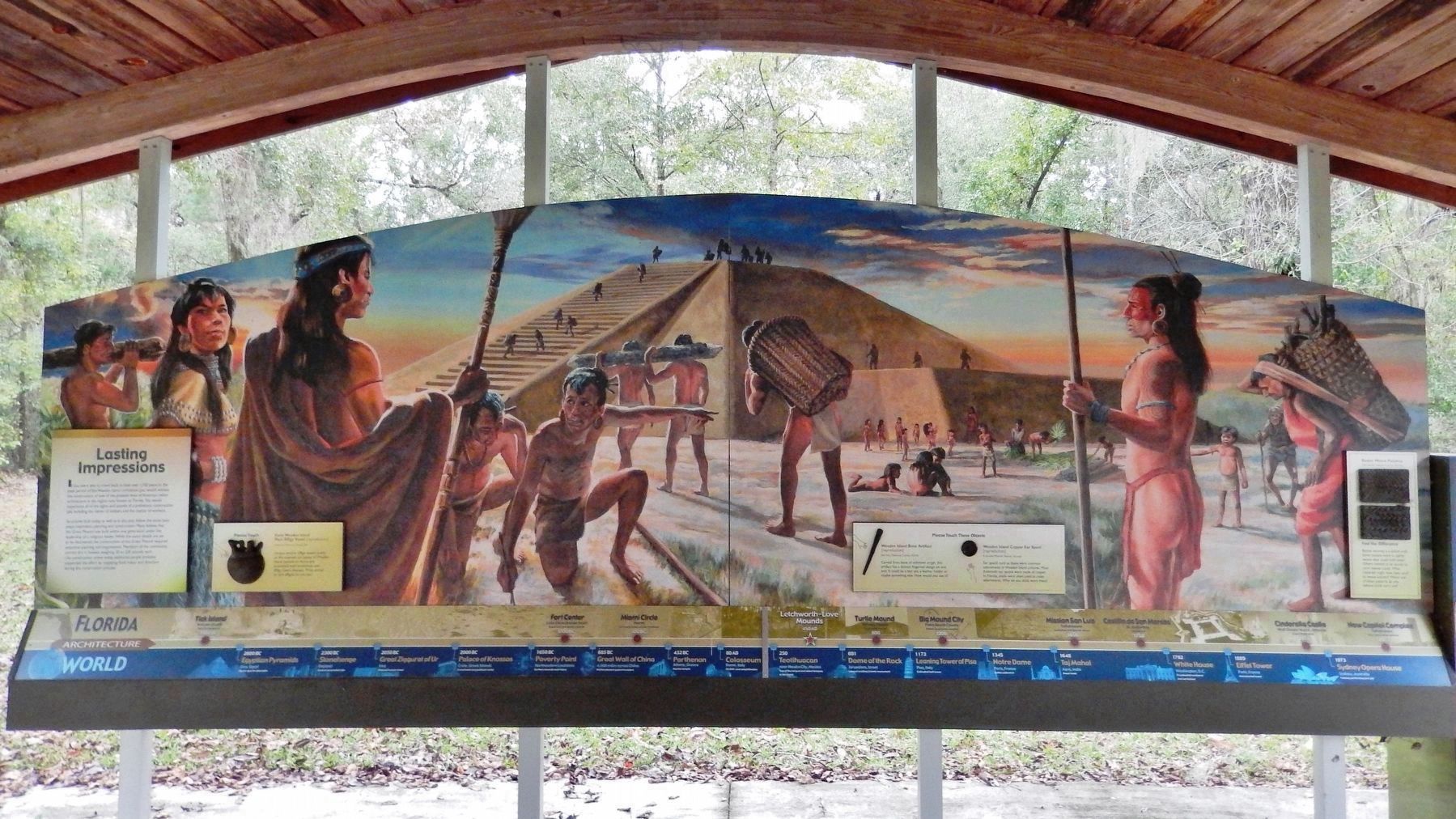Near Monticello in Jefferson County, Florida — The American South (South Atlantic)
Lasting Impressions
Structures built today, as well as in the past, follow the same basic steps: inspiration, planning and construction. Many believe that the Great Mound was built within one generation under the leadership of a religious leader. While the exact details are yet to be discovered, the construction of the Great Mound required extensive planning and organization. Members of the community carried dirt in baskets weighing 30 to 230 pounds each. Like construction crews today, additional people probably supported the effort by supplying food, water and direction during the construction process.
Erected by Letchworth-Love Mounds Archaeological State Park.
Topics. This historical marker is listed in these topic lists: Anthropology & Archaeology • Architecture • Arts, Letters, Music • Native Americans.
Location. 30° 31.18′ N, 83° 59.485′ W. Marker is near Monticello, Florida, in Jefferson County. Marker can be reached from Sunray Road, 0.6 miles south of Mahan Drive (U.S. 90), on the right when traveling south. Marker and mural are located on the west wall of the Letchworth-Love Mounds Archaeological State Park interpretive trail kiosk. Touch for map. Marker is at or near this postal address: 4500 Sunray Road South, Monticello FL 32344, United States of America. Touch for directions.
Other nearby markers. At least 8 other markers are within 7 miles of this marker, measured as the crow flies. The Hunt for the Great Mound (within shouting distance of this marker); The Lay of the Land (within shouting distance of this marker); Letchworth-Love Mounds Archaeological State Park (about 300 feet away, measured in a direct line); Digging Deeper (about 400 feet away); Miccosukee United Methodist Church (approx. 5.9 miles away); Village of Miccosukee (approx. 5.9 miles away); Constant Attack (approx. 6.8 miles away); Confederate Memorial (approx. 6.9 miles away). Touch for a list and map of all markers in Monticello.
Related markers. Click here for a list of markers that are related to this marker. Letchworth-Love Mounds Archaeological State Park
Also see . . . Letchworth-Love Mounds Archaeological State Park. Visitors to this archaeological site will see Florida's tallest Native American ceremonial mound which was built between 1100 and 1800 years
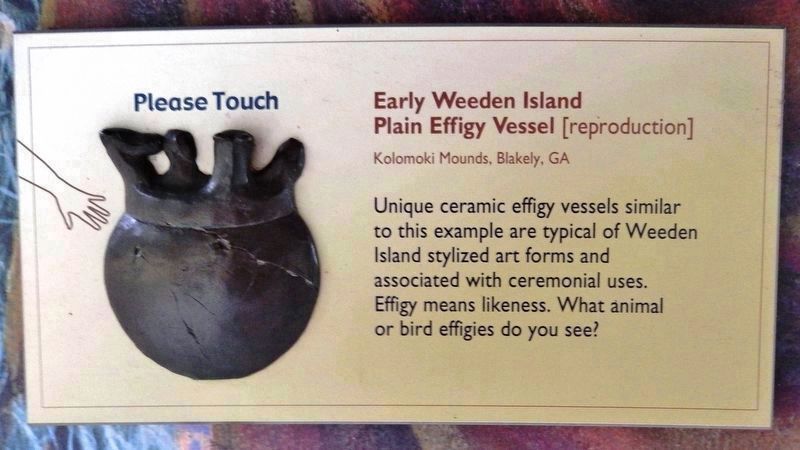
2. Marker detail: Early Weeden Island Plain Effigy Vessel
(Kolomoki Mounds, Blakely, GA)
(Kolomoki Mounds, Blakely, GA)
[reproduction] Unique ceramic effigy vessels similar to this example are typical of Weeden Island stylized art forms and associated with ceremonial uses. Effigy means likeness. What animal or bird effigies do you see?
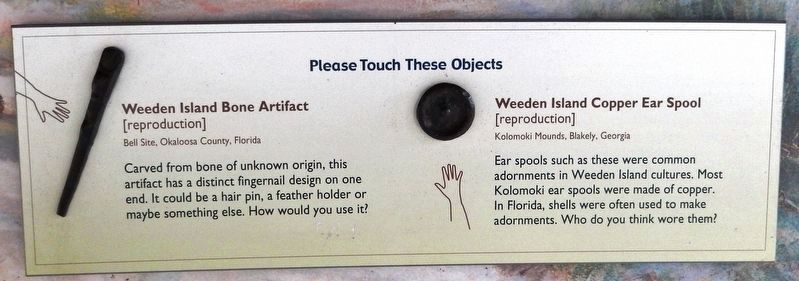
3. Marker detail: Weeden Island artifacts
Weeden Island Bone Artifact [reproduction]
(Bell Site, Okaloosa County, Florida)
Carved from bone of unknown origin, this artifact has a distinct fingernail design on one end. It could be a hair pin, a feather holder or maybe something else. How would you use it?
Weeden Island Copper Ear Spool [reproduction]
(Kolomoki Mounds, Blakely, Georgia)
Ear spools such as these were common adornments in Weeden Island cultures. Most Kolomoki ear spools were made of copper. In Florida, shells were often used to make adornments. Who do you think wore them?
(Bell Site, Okaloosa County, Florida)
Carved from bone of unknown origin, this artifact has a distinct fingernail design on one end. It could be a hair pin, a feather holder or maybe something else. How would you use it?
Weeden Island Copper Ear Spool [reproduction]
(Kolomoki Mounds, Blakely, Georgia)
Ear spools such as these were common adornments in Weeden Island cultures. Most Kolomoki ear spools were made of copper. In Florida, shells were often used to make adornments. Who do you think wore them?
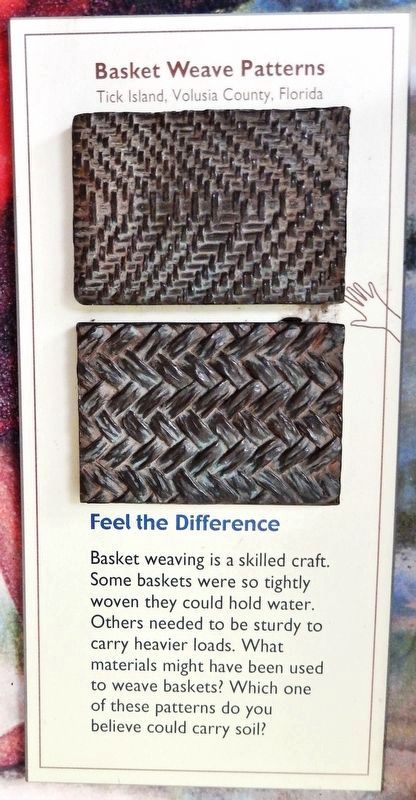
4. Marker detail: Basket Weave Patterns
(Tick Island, Volusia County, Florida)
(Tick Island, Volusia County, Florida)
Basket weaving is a skilled craft. Some baskets were so tightly woven they could hold water. Others needed to be sturdy to carry heavier loads. What materials might have been used to weave baskets? Which one of these patterns do you believe could carry soil?
Credits. This page was last revised on July 22, 2020. It was originally submitted on July 21, 2020, by Cosmos Mariner of Cape Canaveral, Florida. This page has been viewed 184 times since then and 14 times this year. Photos: 1. submitted on July 21, 2020, by Cosmos Mariner of Cape Canaveral, Florida. 2, 3, 4, 5, 6, 7. submitted on July 22, 2020, by Cosmos Mariner of Cape Canaveral, Florida.
